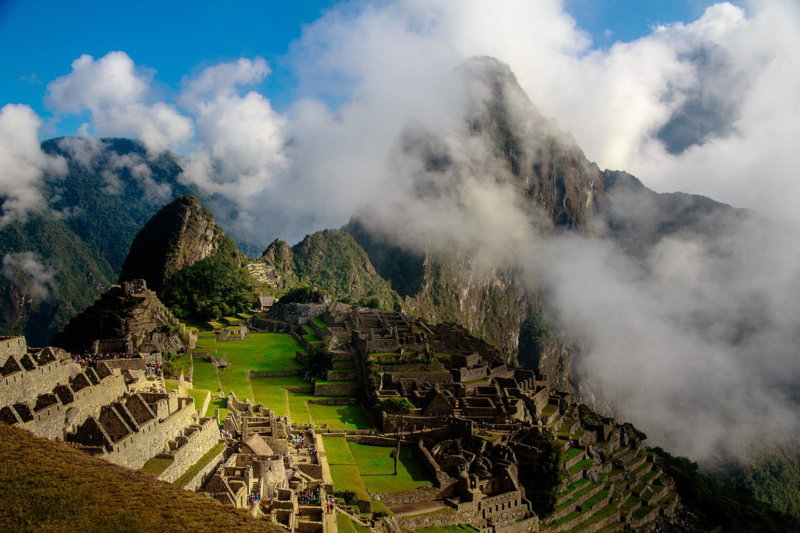
The allure of lost civilizations has fascinated historians, archaeologists, and the general public for centuries. From the dense jungles of the Amazon to the deserts of the Middle East, these ancient societies leave behind mysteries that continue to captivate us. In this article, we’ll explore some of the world’s most intriguing lost civilizations, examining their history, accomplishments, and the questions that remain unanswered.
1. The Maya Civilization (Central America)
The Maya civilization, which flourished in Central America, is known for its impressive cities, advanced knowledge of astronomy, and intricate calendar system. Despite its achievements, the Maya mysteriously abandoned many of their cities around the 9th century.
- Known For: Complex writing system, advanced mathematics, and iconic pyramids.
- Unsolved Mystery: What caused the sudden collapse of their cities? Scholars propose climate change, overpopulation, and warfare as possible reasons.
The Maya civilization continues to inspire both fascination and mystery, with many ancient ruins still hidden in the dense jungle.
2. The Indus Valley Civilization (South Asia)
The Indus Valley Civilization, located in present-day Pakistan and northwest India, was one of the earliest urban societies. Known for its advanced city planning, including sanitation systems and grid layouts, the civilization vanished around 1900 BCE.
- Known For: Urban planning, sophisticated drainage systems, and trade networks.
- Unsolved Mystery: Why did this society decline? Some theories suggest natural disasters or invasions, but there is no consensus among scholars.
The civilization’s script remains undeciphered, adding to the mystery surrounding its culture and beliefs.
3. Ancient Egypt (Northeast Africa)
While Egypt itself is not a lost civilization, many of its ancient secrets remain hidden. Known for the Pyramids of Giza, the Sphinx, and elaborate burial practices, ancient Egyptian culture left behind artifacts that continue to puzzle researchers.
- Known For: Monumental architecture, hieroglyphic writing, and religious mythology.
- Unsolved Mystery: How were the massive pyramids constructed with such precision? Theories range from advanced engineering to extraterrestrial assistance.
Ancient Egypt’s achievements in art, architecture, and science remain among the most studied in history.
4. The Ancestral Puebloans (Southwestern United States)
The Ancestral Puebloans, also known as the Anasazi, were an ancient Native American culture that built cliff dwellings and pueblos in what is now the southwestern United States. They abandoned their settlements in the late 13th century.
- Known For: Cliff dwellings, pottery, and rock art.
- Unsolved Mystery: Why did they leave their homes? Environmental changes, resource depletion, and social factors may have contributed to their migration.
The abandoned cliff dwellings remain as a testament to the ingenuity and resilience of this lost civilization.
5. The Kingdom of Kush (Nubia, Northeast Africa)
Located south of ancient Egypt, the Kingdom of Kush was known for its wealth, powerful queens, and skilled ironworking. Though influenced by Egypt, Kush developed a unique culture and ruled as an empire for several centuries.
- Known For: Rich resources, pyramids, and strong queens.
- Unsolved Mystery: How did the kingdom decline? Although environmental and economic factors are suggested, the exact causes remain unclear.
Kushite pyramids still stand in Sudan, preserving the legacy of this powerful African kingdom.
6. The Minoan Civilization (Crete)
The Minoans, who lived on the island of Crete, are considered one of the earliest advanced societies in Europe. They developed a sophisticated culture and built elaborate palaces before mysteriously disappearing around 1400 BCE.
- Known For: Advanced architecture, art, and trade with neighboring civilizations.
- Unsolved Mystery: Did natural disasters, such as the volcanic eruption at Thera, lead to their decline? Scholars continue to debate this question.
Artifacts and structures uncovered on Crete offer glimpses into the life of this enigmatic civilization.
7. The Nabateans (Jordan)
The Nabateans, best known for their capital city Petra, were a skilled trading civilization in the Arabian Peninsula. They prospered through trade routes connecting the Mediterranean with Asia but eventually faded from history.
- Known For: Rock-cut architecture, hydraulic engineering, and trade networks.
- Unsolved Mystery: Why did they disappear? After Roman annexation, Petra and the Nabateans declined, though the exact reasons are unclear.
Petra’s intricate structures continue to draw visitors, standing as a symbol of Nabatean ingenuity.
8. The Olmec Civilization (Mexico)
The Olmecs are considered the ‘mother culture’ of Mesoamerica, known for their colossal stone heads and early contributions to writing and religion. They vanished around 400 BCE, but their influence shaped later civilizations like the Maya and Aztecs.
- Known For: Colossal stone heads, early Mesoamerican writing, and religious symbols.
- Unsolved Mystery: What led to their decline? Environmental changes and internal conflict are possible factors, but no definitive cause is known.
The Olmec’s cultural legacy continues to intrigue historians, offering insight into Mesoamerican prehistory.
9. The Khmer Empire (Cambodia)
The Khmer Empire, which ruled much of Southeast Asia, is renowned for its architectural achievements, especially the temple complex of Angkor Wat. Despite their strength, the empire mysteriously declined in the 15th century.
- Known For: Monumental temples, complex water systems, and extensive trade.
- Unsolved Mystery: Why did Angkor decline? Theories include warfare, climate change, and resource depletion.
Today, Angkor Wat remains one of the world’s largest religious monuments, drawing visitors from around the globe.
10. The Sumerians (Mesopotamia)
The Sumerians, known as one of the world’s earliest civilizations, invented cuneiform writing, built impressive ziggurats, and developed early city-states. Their culture faded around 2000 BCE, though their influence shaped later empires.
- Known For: Writing, legal codes, and monumental architecture.
- Unsolved Mystery: How did they vanish? Conquests and environmental changes likely contributed, but the exact reasons remain debated.
The Sumerians’ advancements in writing, law, and architecture laid the foundations for future societies.
Conclusion
The mysteries surrounding these ancient civilizations remind us of the fragility and resilience of human societies. While their cities and cultures may have vanished, the legacies of these lost civilizations endure, inspiring curiosity and wonder. As archaeology and technology advance, perhaps one day we’ll uncover the answers to the questions these civilizations left behind.








